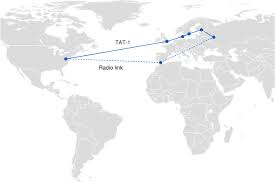On August 30, 1963, a historic moment in international communication occurred with the establishment of a direct telephone line between Moscow and Washington D.C. This direct line, known as the Moscow-Washington Hotline or the "red phone," served as a crucial communication channel between the leaders of the United States and the Soviet Union during the tense years of the Cold War. The idea for a direct line between the two superpowers was first proposed in 1954 by U.S. President Dwight D. Eisenhower. The increasing tensions and the fear of a potential nuclear conflict led to the recognition of the need for a more efficient and direct means of communication between Moscow and Washington. The construction of the hotline began in 1962, following the Cuban Missile Crisis, which highlighted the dangers of miscommunication and the potential for miscalculation between the two superpowers. The hotline's purpose was to establish a reliable and secure method of communication that would allow for immediate contact and the exchange of information, reducing the risk of misunderstandings or escalating conflicts. The hotline was established using state-of-the-art technology for the time. It consisted of teletype machines that allowed for the transmission of written messages between the leaders of the United States and the Soviet Union. The messages were then translated and delivered to the respective leaders by trained operators. The hotline played a significant role in diffusing tensions and preventing potential conflicts during the Cold War. It allowed for prompt communication during critical moments, such as the Berlin Crisis in 1961 and the Cuban Missile Crisis in 1962. The direct line provided a means for leaders to clarify intentions, seek clarification, and convey important information, reducing the risk of misunderstandings or rash actions. The hotline's most notable use came during the tense period of the October 1962 Cuban Missile Crisis. As tensions escalated between the United States and the Soviet Union over the placement of nuclear missiles in Cuba, President John F. Kennedy and Soviet Premier Nikita Khrushchev utilized the hotline to exchange messages and negotiate a peaceful resolution to the crisis. The direct line played a crucial role in preventing a potential nuclear war and demonstrated the importance of reliable and efficient communication channels. Over the years, the hotline has evolved with advances in technology. It transitioned from teletype machines to fax machines in the 1980s and eventually to secure email systems in the 21st century. Despite the advancements, the purpose of the hotline remains the same – to provide a direct and efficient means of communication between the leaders of the United States and Russia, ensuring the ability to promptly address potential crises and prevent misunderstandings. The establishment of the direct line between Moscow and Washington on August 30, 1963, represented a significant step towards reducing tensions and promoting communication during the Cold War. The hotline played a crucial role in preventing misunderstandings and diffusing potential conflicts. It stands as a symbol of the importance of open lines of communication, even in times of heightened tensions, and serves as a reminder of the potential for diplomacy and dialogue to avert catastrophic consequences.
30 Aug, 1963 Direct Line Between Moscow and Washington
